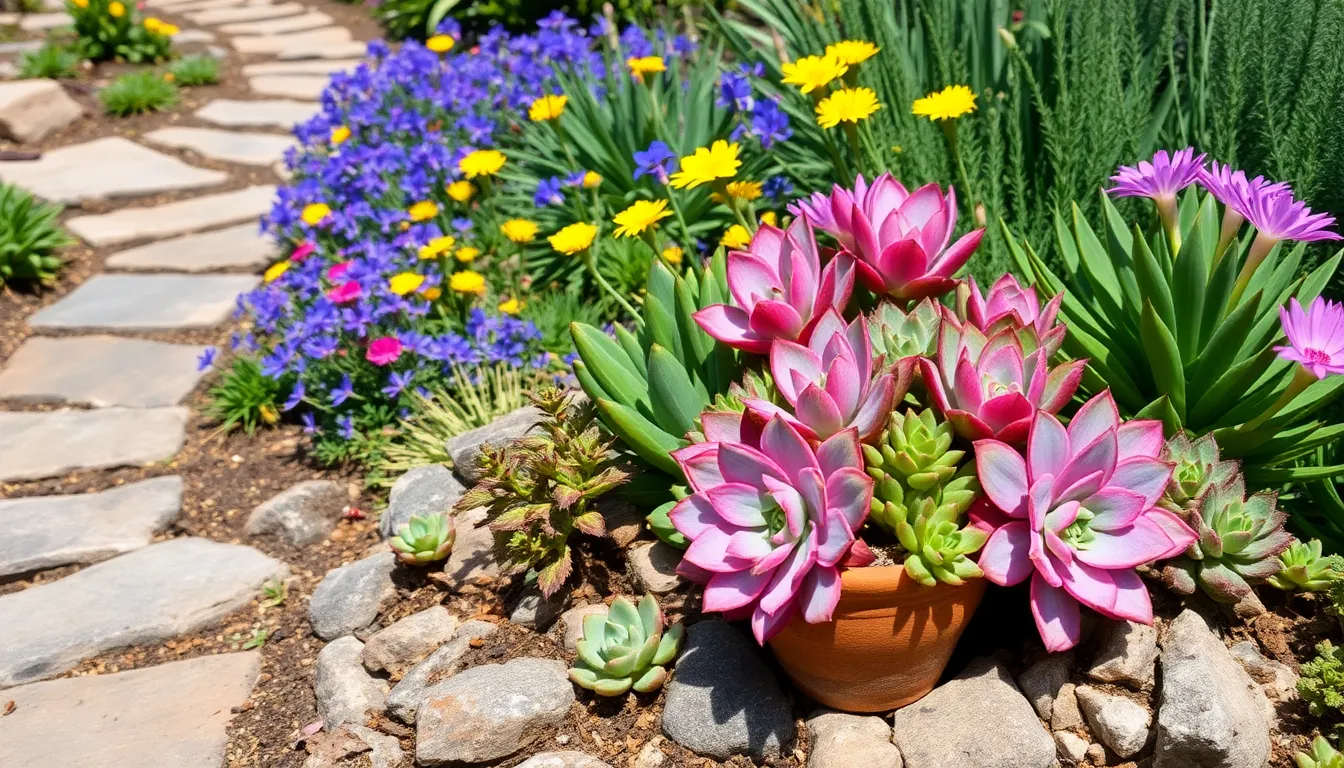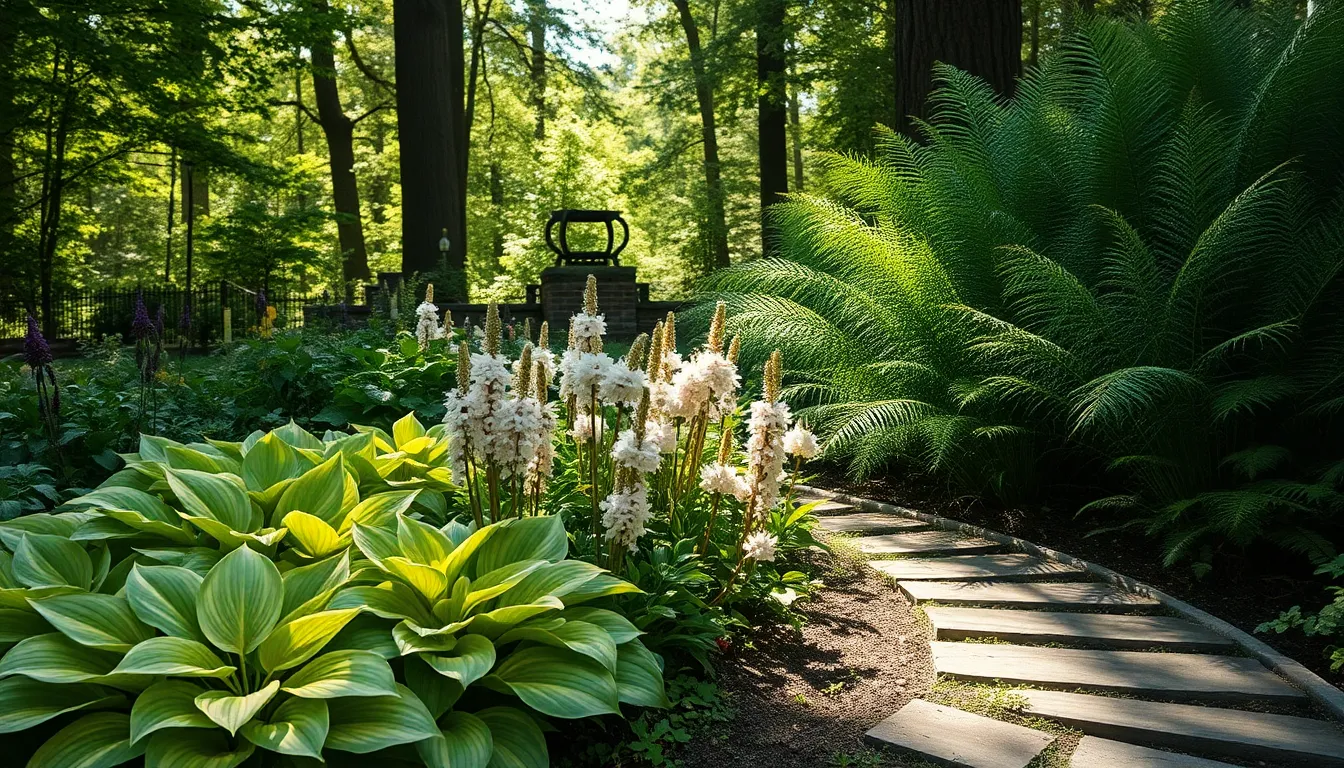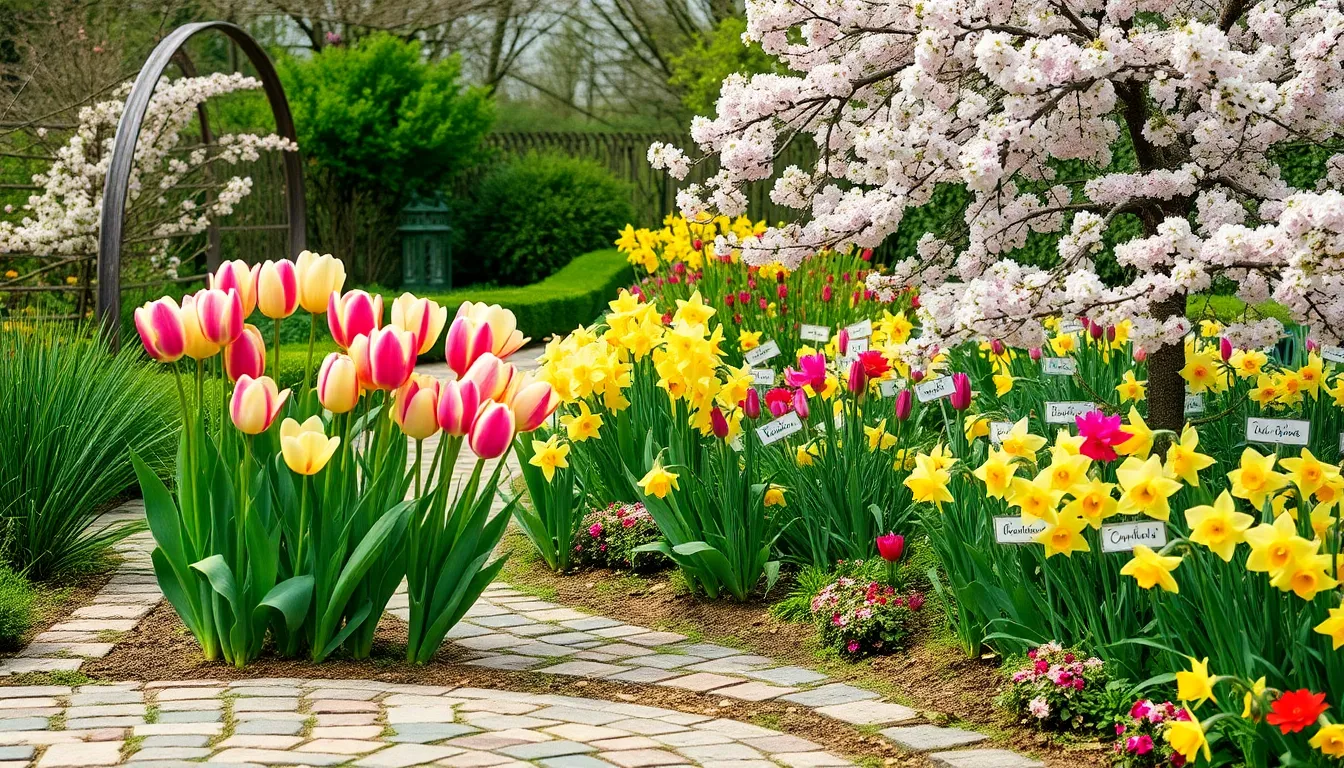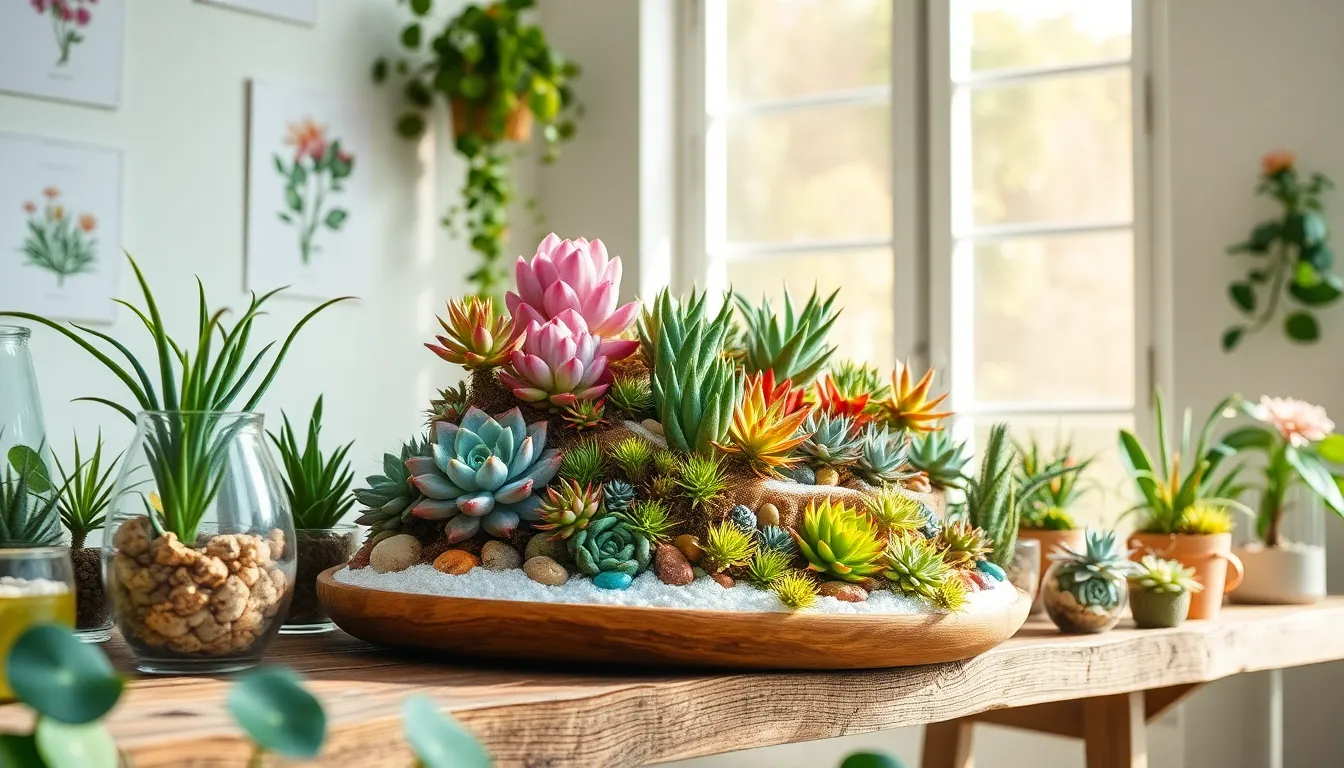Welcome to a world where lush greenery and vibrant blooms greet you at every corner, all without demanding your precious time and effort. Whether you’re just dipping your toes into the rich soil of gardening or are a seasoned green thumb seeking a simpler approach, this guide is your passport to a thriving, low-maintenance indoor oasis.
In these pages, you’ll discover a handpicked selection of plants that promise to transform your space into a verdant paradise with minimal fuss. These resilient beauties not only bring life and tranquility to your home but also empower you to enjoy the joys of gardening without the burden of high upkeep.
Imagine the satisfaction of nurturing a thriving garden that thrives alongside you, rewarding your care with every new leaf and bloom. With this guide, you’ll gain practical insights and tips that make cultivating your dream garden both achievable and fulfilling, leaving you confident and inspired every step of the way.
Lavender (Drought-Tolerant Beauty)
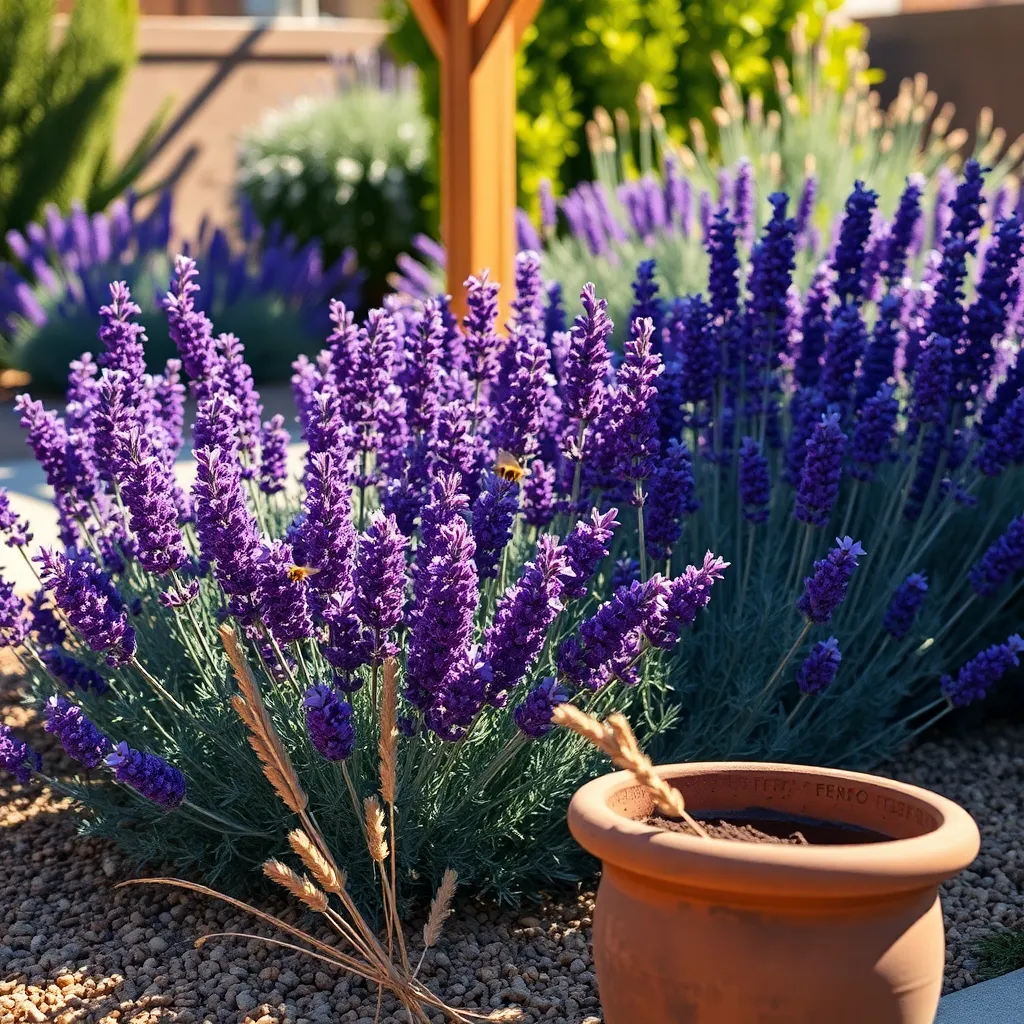
Lavender is a fantastic choice for a low-maintenance garden, offering beauty and resilience with minimal effort. Known for its drought-tolerant nature, lavender thrives in well-drained soil and full sun, making it perfect for gardens in sunny, dry climates.
To ensure your lavender thrives, plant it in soil that is light and sandy, ideally with a pH of 6.5 to 7.5. If your garden soil is heavy clay or poorly draining, consider amending it with sand or gravel to improve drainage.
Watering lavender is straightforward—allow the soil to dry out between waterings to prevent root rot. For those in humid regions, spacing your lavender plants with ample room for air circulation can help prevent fungal diseases.
Pruning is essential for maintaining healthy lavender plants; trim back one-third of the plant in early spring to encourage new growth. Advanced gardeners might consider harvesting the blooms for drying and crafting, adding an aromatic touch to their DIY projects.
Sedum (Resilient Ground Cover)
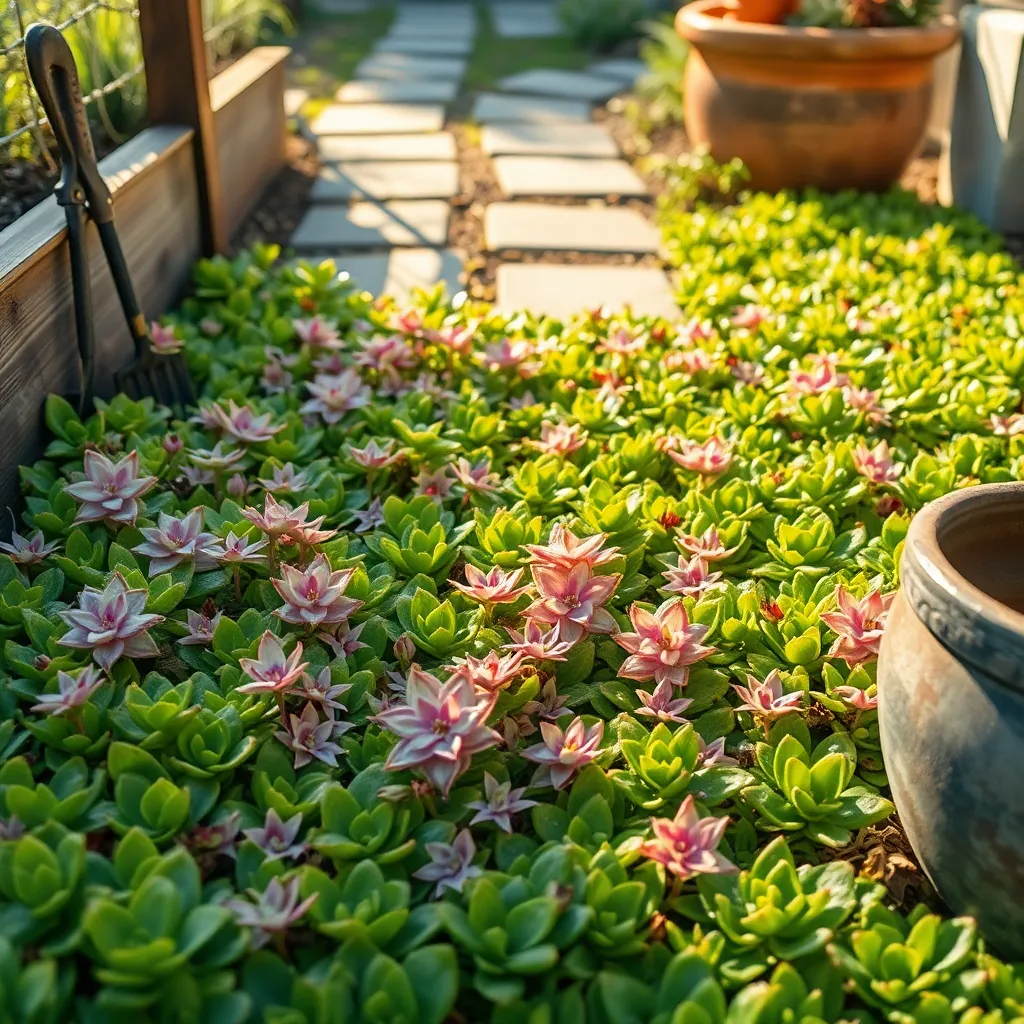
Sedum, also known as stonecrop, is a fantastic choice for a low-maintenance garden due to its impressive resilience and adaptability. This ground cover thrives in a variety of conditions, making it perfect for gardeners of all skill levels looking for an easy-to-care-for plant.
To ensure success with sedum, plant it in well-draining soil, such as sandy or gritty types, which helps prevent root rot. Once established, sedum requires minimal watering, only needing moisture during prolonged dry spells.
When placing sedum in your garden, try to select a spot that receives full sun, as this will encourage the most vibrant growth and flowering. However, sedum can also tolerate partial shade, making it a versatile option for different garden layouts.
For those looking to propagate sedum, simply take a cutting and plant it directly into the soil, where it will quickly establish roots. Advanced gardeners might experiment with creating sedum mosaics by planting different varieties together to form colorful patterns.
Automatic Self-Watering Planters (Effortless Hydration)
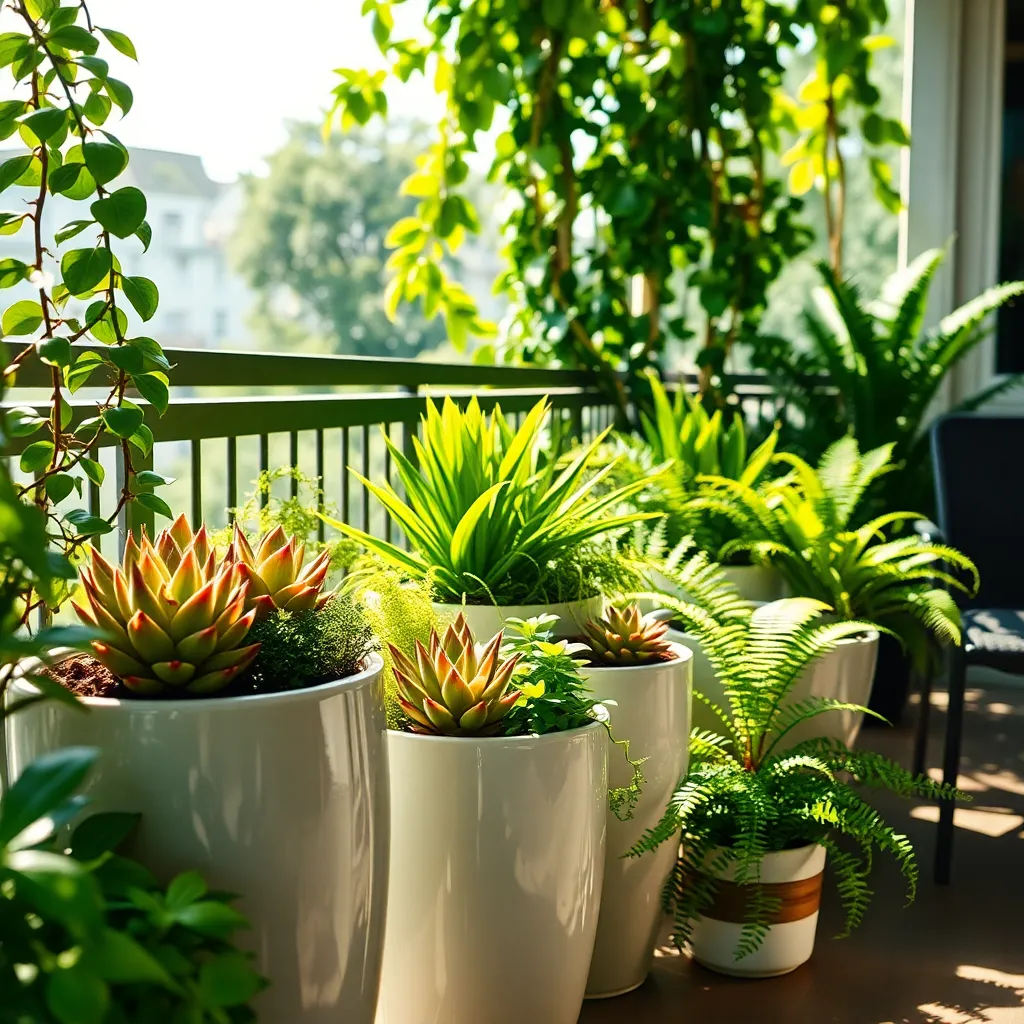
Automatic self-watering planters are an excellent solution for those seeking low-maintenance gardening options. These planters feature a reservoir system that allows plants to absorb water as needed, ensuring consistent hydration without daily attention.
When using self-watering planters, choose plants that thrive in consistently moist conditions, such as ferns or peace lilies. Beginners can start with potting mix designed for these planters, which typically includes a blend of peat, vermiculite, and perlite to promote even water distribution.
For more advanced gardeners, consider adjusting the soil mixture to suit specific plant needs. Adding materials like coconut coir can improve water retention, while an extra layer of activated charcoal at the bottom can help keep the reservoir clean and free from odors.
Self-watering planters are particularly beneficial during hot weather or while on vacation. To maximize their efficiency, position the planters in areas with adequate light and monitor the water level in the reservoir regularly to prevent it from running dry.
Ornamental Grasses (Year-Round Interest)
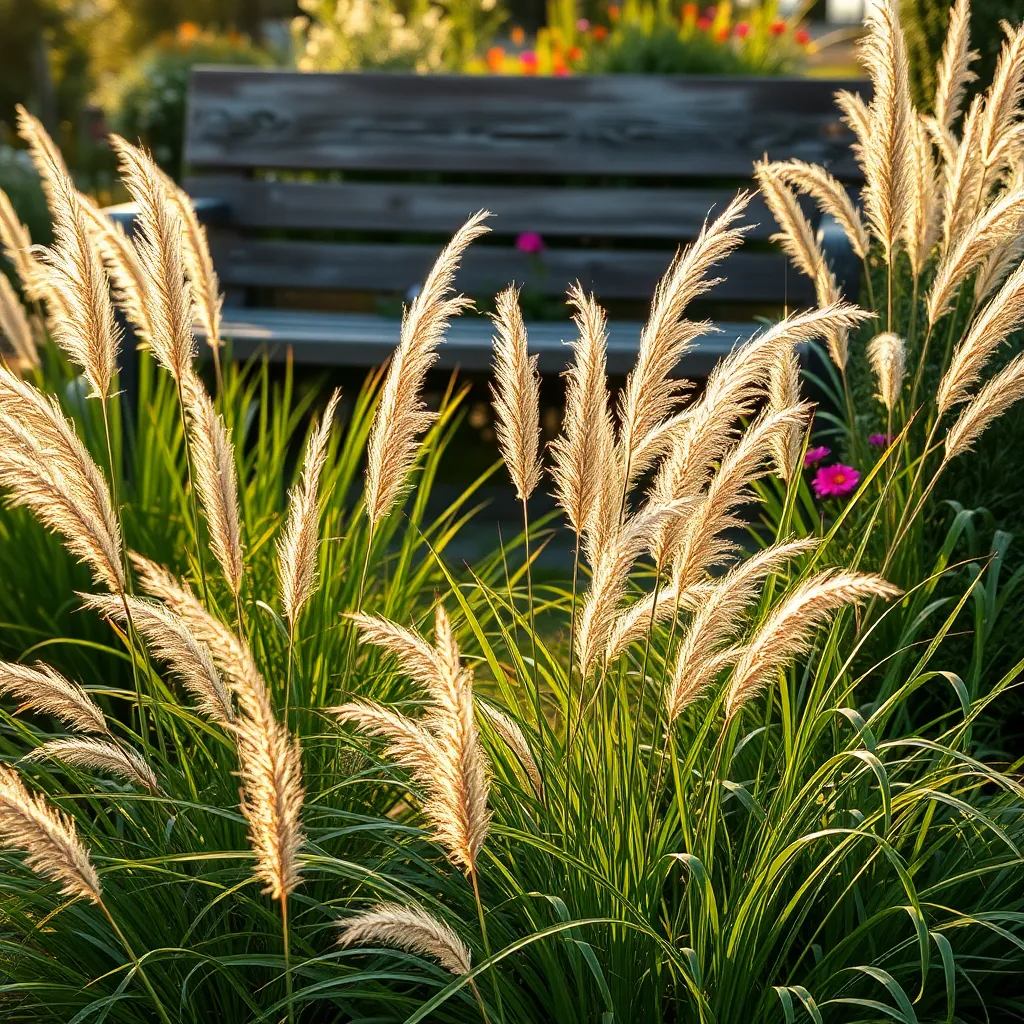
Ornamental grasses are an excellent choice for a low-maintenance garden due to their year-round interest and minimal care requirements. These grasses can add texture, movement, and color to your garden, making them a versatile addition to any landscape.
To thrive, ornamental grasses generally require well-draining soil and a sunny location. Most varieties are drought-tolerant once established, making them a great option for gardeners who want plants with low water needs.
Beginner gardeners will find it easy to care for these grasses, as they require little more than an annual cutback in late winter or early spring. Simply trim them down to a few inches above the ground, and they’ll reward you with lush new growth come springtime.
For those looking to add a touch of sophistication, consider experimenting with different varieties like Miscanthus or Pennisetum. These grasses provide not only visual appeal but also attract wildlife such as birds and beneficial insects, enhancing your garden’s ecosystem.
Mulch Application (Weed Suppression Technique)
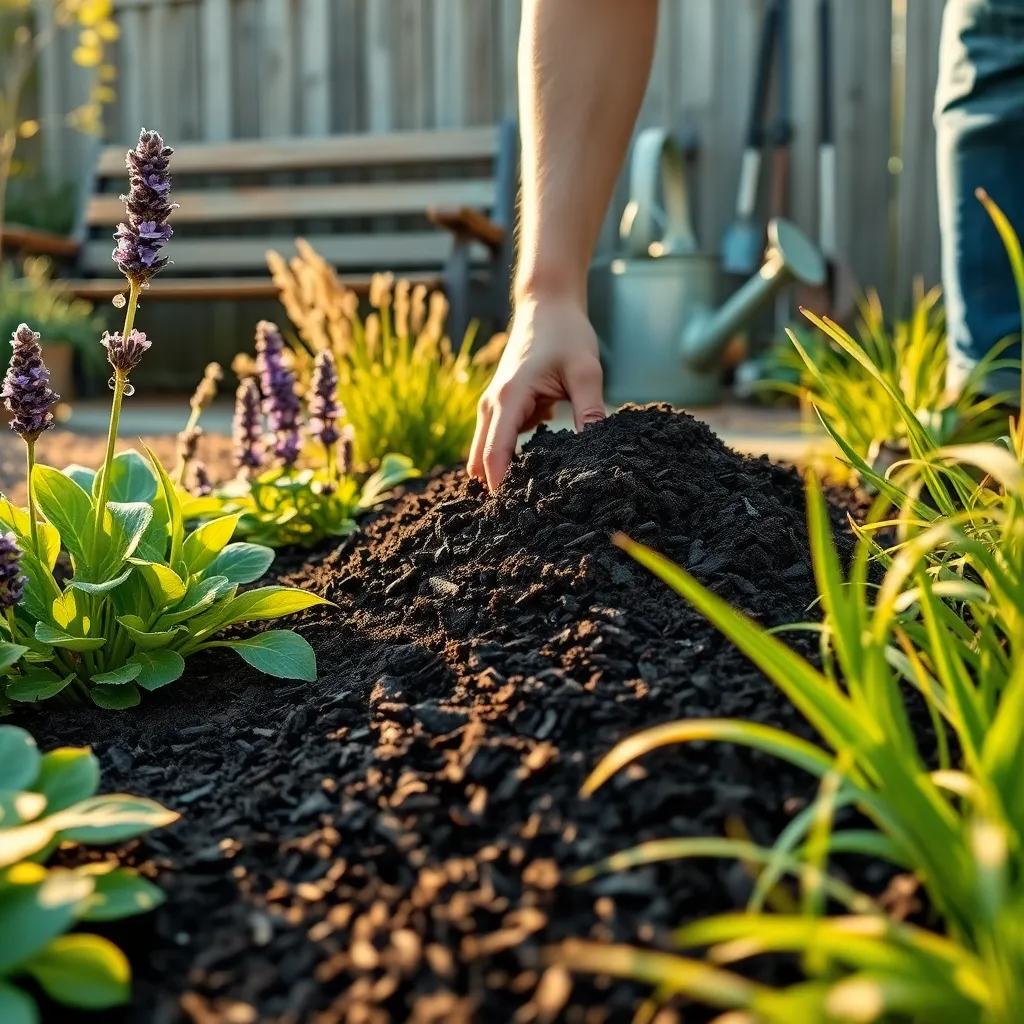
Mulching is an effective technique for suppressing weeds in your garden, making it a perfect choice for maintaining a low-maintenance landscape. By covering the soil with a layer of organic material, such as wood chips or straw, you can prevent sunlight from reaching weed seeds, thus inhibiting their growth.
Apart from weed suppression, mulching offers additional benefits like moisture retention and soil temperature regulation, which are crucial for plant health. To maximize these benefits, ensure you apply mulch at a depth of about 2 to 4 inches, but be careful not to pile it against plant stems to avoid rot.
For beginners, organic mulches like shredded bark or compost are easy to apply and decompose over time, enriching the soil with nutrients. Experienced gardeners might experiment with more advanced options such as living mulches or synthetic fabrics, which can offer longer-lasting solutions in areas prone to heavy weed invasion.
To maintain your mulched areas, periodically check the mulch layer and refresh it as needed to maintain its thickness, especially after heavy rains or strong winds. Additionally, consider using a mix of mulch types to enhance both the aesthetic appeal and functionality of your garden spaces.
Conclusion: Growing Success with These Plants
As we conclude our exploration of the best plants for a low-maintenance garden, let’s reflect on the key relationship concepts we’ve covered: the importance of mutual growth, the balance between effort and ease, the necessity of nurturing connections, the resilience required for lasting bonds, and the beauty found in diversity. Each concept mirrors the dynamics of a thriving relationship, offering insights into how we can cultivate and sustain meaningful connections in our lives.
Now, take a moment to envision how these principles can be applied beyond the garden. Consider setting aside time today to nurture a relationship, whether by sharing a meaningful conversation or simply expressing gratitude. This small action can create a ripple effect, strengthening the bonds you hold dear.
To ensure these insights remain at your fingertips, we encourage you to bookmark this article. Let it serve as a reminder of the growth and harmony you can achieve both in your garden and your relationships.
As you move forward, remember that every relationship, like a well-tended garden, flourishes with care, patience, and attention. Embrace these concepts, and watch your connections thrive in beautiful, unexpected ways. 🌱💚

